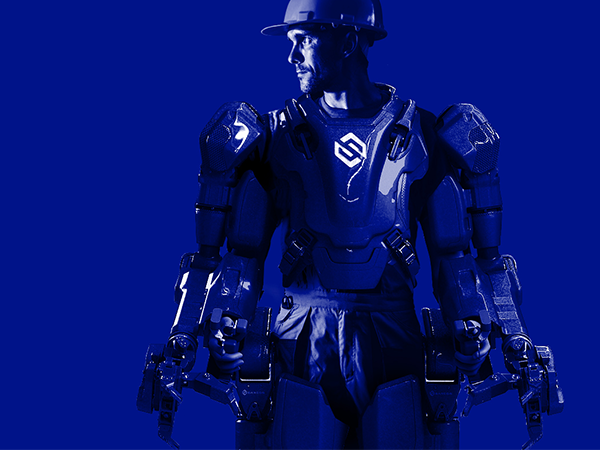Despite recent media buzz about robots taking over the workforce and replacing employees, particularly in manufacturing, recent studies actually show the opposite is true – the United States is going to have a deficit of skilled workers in the industrial labor force. According to recent analysis from Deloitte, over the next decade, 3.5 million manufacturing jobs will likely be needed, but 2 million are expected to go unfilled due to a skill gap, which will ultimately impact productivity and profitability. This is due to a variety of factors, including an aging work force, lower birth rates and less interest from younger generations in jobs that require physical exertion.
On top of this forecasted talent shortage, the issue of occupational injuries and illness – now at a staggering 8.5 million each year – threaten to further impact productivity and revenues, costing more than $250 billion per year, according to a UC Davis study. Forty percent, or $100 billion, of these expenses are directly attributable to back pain related to overexertion from lifting, pushing, pulling, holding, carrying or throwing objects. These injuries affect a myriad of industries, from manufacturing to logistics to construction and even defense.
Many organizations across these industries are asking themselves: what is the solution? How can we keep our employees safe and healthy, and increase productivity at the same time?
One potential answer: exoskeletons
Powered, full-body exoskeletons augment human productivity and safety by combining the best of what man and machine have to offer – the intelligence, intuition and instincts of humans and the strength, endurance and precision of machines. It has become increasingly apparent that existing solutions, such as cranes, forklifts and lift assist machines, play an important role but create their own safety risks and are not optimized for many industrial tasks. The advances of energy storage, electronic components and electric motors have enabled the development of powered exoskeletons machines that provide the strength, dexterity and precision needed to support agile manufacturing, extend the useful life of workers, and equalize job opportunities, all while also reducing injuries and healthcare expenses.
This week at the 2018 WearRAcon conference, Sarcos Robotics’ Chairman and CEO Ben Wolff discussed the potential of powered exoskeleton technology for the workforce – that is, energetically autonomous, powered full-body exoskeletons that do “real work.” Real work is defined as a machine lifting more than 40 pounds and dexterously manipulating the load in human-scaled workspaces without increasing the load on the operator.
Sarcos also announced the formation of an industry-focused Exoskeleton Technical Advisory Group (“X-TAG”) that is comprised of executives from leading companies across a variety of industries including industrial manufacturing, automotive, aviation, construction, logistics, oil & gas, and utilities. The X-TAG is working with Sarcos and industry groups to identify key performance and safety requirements necessary to bring powered full-body industrial exoskeleton systems to the work force.
“The X-TAG represents a truly collaborative effort to develop powered, full-body worker augmentation robots designed to increase the capabilities of humans, while simultaneously improving worker safety”, says John Santagate, Research Director for Service Robots at IDC. “Bringing together this variety of leading industry experts will help Sarcos to ensure the usefulness and value of its exoskeleton technology when it is ready to bring it to market.”
Powered exoskeleton robots are a real step in the direction of solving not only the issue with occupational injuries and death, but also the labor shortage that is expected to worsen in the decades to come. With the promise of powered exoskeleton technology, the workforce of the future will be defined by wearable robots – enhancing productivity, keeping workers safe and out of harm’s way, and augmenting, not replacing, human employees.
To learn more about the X-TAG, please visit the below resources:
- IDC Research report by John Santagate: Sarcos Partners with Industry Leaders to Drive Development of Robotics Exoskeletons
- Forbes article by Eric Mack: BMW, GE, Delta and Others Want to Put Workers in This Crazy Exoskeleton
- Delta News Hub article: Delta Explores Robotic Suits to Augment Employee Safety.
